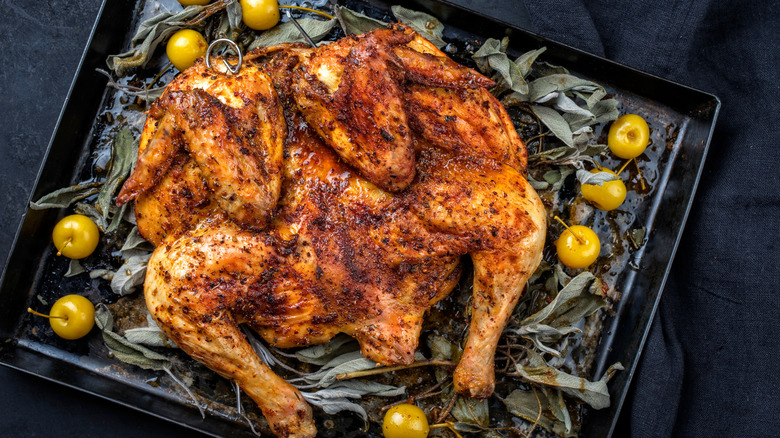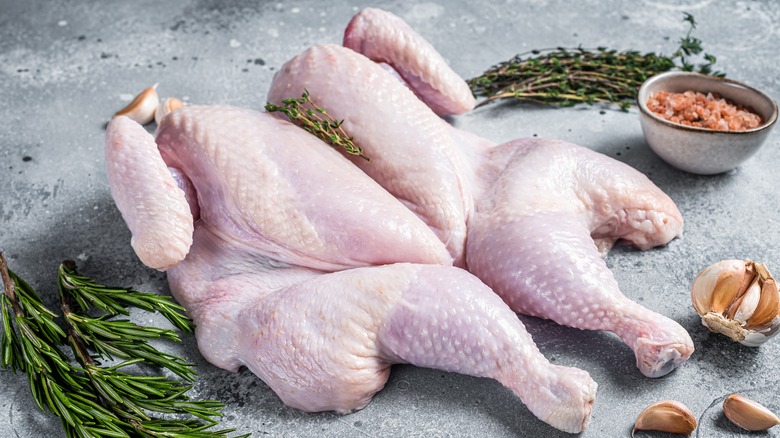Don't Forget To Pat Spatchcock Chicken Dry For Extra Crispy Skin
We all want our roasted chicken to have that perfect mix of juicy meat with shattering, crispy skin — and spatchcocking is the way to do it. Spatchcocking simply means flattening your whole chicken by removing its backbone, and then pressing the split bird down to create a more even cooking surface. With your chicken getting more even exposure to the heat of the oven, the white and dark meat portions will cook at more equal pace resulting in a more tender roast. The skin will also be facing up and not as tucked away as with the standard round shape, and thus more directly exposed to heat, resulting in that enticing browning and crunchy finish you're looking for. But even spatchcocked chicken still needs some extra help to get the crispiest finish possible, and that means keeping the surface of the skin dry.
Moisture is the enemy of browning and crispy food, so any residual moisture on your chicken skin will inhibit the process. That's why you should always pat your chicken as dry as possible with paper towels. Spatchcocked chicken will roast faster, so even with the better heat exposure water on the surface can slow browning enough to keep it from getting crispy before the meat is done. This is true even if you've marinated your chicken. The excess marinade won't add much flavor, but will result in a soggy meal.
Moisture on your chicken skin prevents the processes that cause browning
A little water might not seem like a big deal, but the chemical reactions at work when you roast are significantly slowed down by moisture. First, water will evaporate in your oven, creating a wetter, steam heat that won't crisp up the skin. Moisture also slows the Maillard reaction, which is responsible for the browning that crisps up your chicken skin and gives your roast more flavor. Browning begins at 280 degrees Fahrenheit, but water can only rise to 212 before it starts to evaporate. That means water needs to be cooked off before your skin starts to get crispy. That takes energy and time from your oven that would normally be browning your chicken. You want the Maillard reaction to happen as soon as possible for the crispiest skin, which means starting with as little moisture on the outside as you can.
There are a few steps you can take before patting your chicken dry to make it even more effective. Letting your chicken air-dry in the fridge overnight will help the skin desiccate, leaving minimal moisture for you to sop up. Brining your chicken with a mixture of salt and a small amount of baking powder and letting it sit for several hours in the fridge can also draw more water out of the skin. Combine both those techniques with a final once-over pat with paper towels, and you'll get the crispiest spatchcocked chicken ever.

